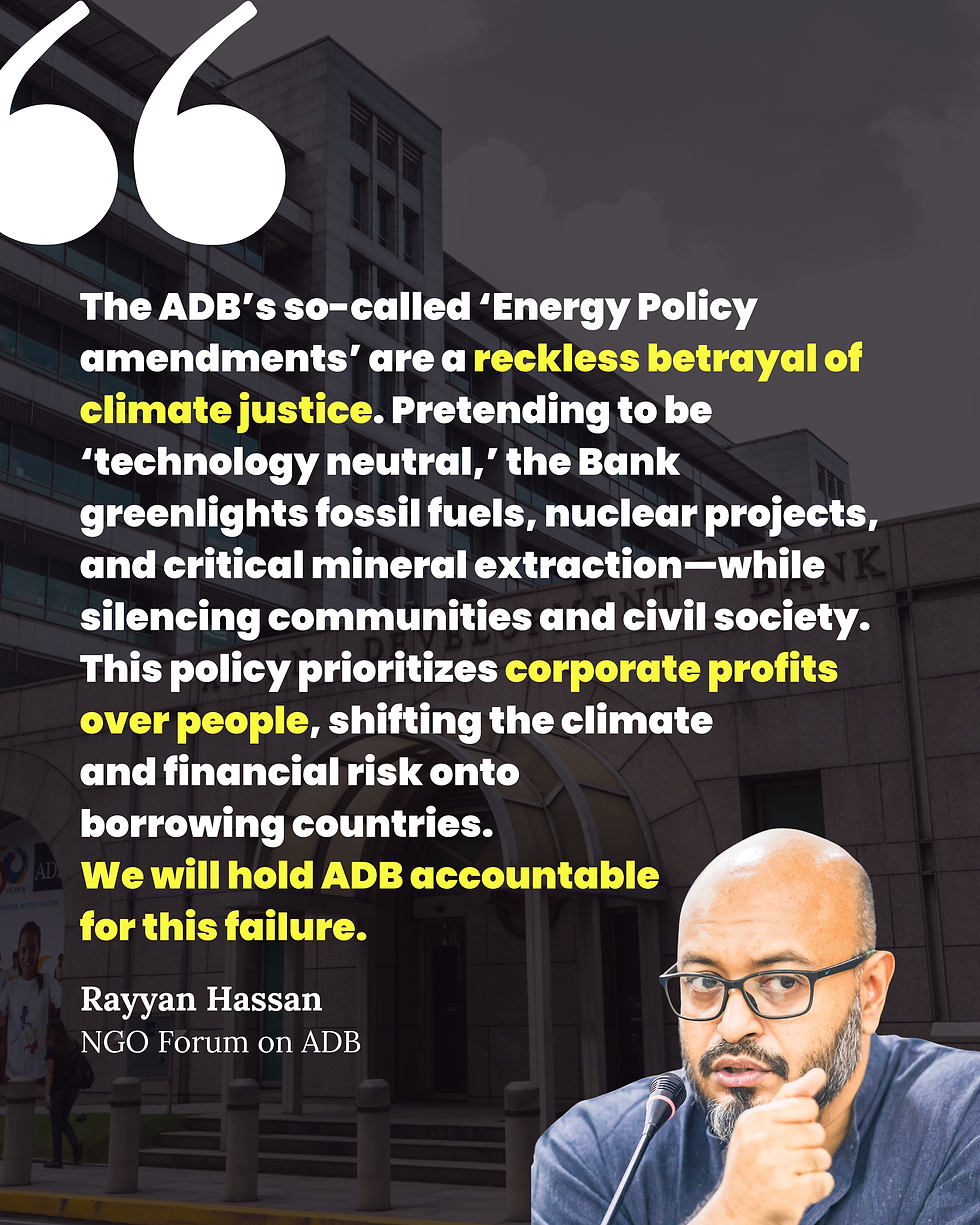Absence of Environmental and Social Oversight Mechanism Continues in AIIB’s Third Year of Operations
- NGO Forum on ADB

- Jun 25, 2018
- 3 min read
The Asian Infrastructure Investment Bank (AIIB)’s third annual meeting in Mumbai comes as the Bank continues to scale up is operations. Since 2016, the Bank has approved nearly five billion USD in lending to 24 projects in 11 countries, all countries located along the Silk Road Economic Belt. At least 20 additional projects are likely to be approved before the end of this year. AIIB President Jin Liqun recently boasted that “in the face of many doubts and misgivings” about AIIB’s willingness to invest in environmentally and socially sustainable projects, “the AIIB defended itself – not with words but with performance. The initial performance of the AIIB over the past two years has gained widespread international recognition, gradually resolving many concerns.”
One concern that remains unresolved is AIIB’s commitment to a robust environmental and social oversight mechanism. Two and a half years since AIIB launched its operations, the Bank still lacks a functioning oversight mechanism—also known as an independent accountability mechanism—to ensure that projects comply with environmental and social requirements, and to provide a forum to address the harms to individuals and communities that can result from violations of those requirements.
The communities that experience harm from development bank-funded projects are nearly always impoverished, frequently lack formal education, and often live in remote rural areas. As a result of development bank-funded projects, children have been sexually abused by project workers, families have been violently and forcibly evicted from their homes to accommodate projects, and adults and children have been forced to work as project laborers. For each of these instances of grave harm, the development banks’ independent accountability mechanisms provided an avenue for redress for those who were harmed, and identified the actions that the banks needed to take to resolve the internal failures that allowed harms to occur.
AIIB’s founding documents, by committing to establish an oversight mechanism, recognized that internal oversight is needed to correct and prevent policy violations that result in harm. But the institution has been extraordinarily slow in following through on that commitment. A draft of the oversight mechanism’s procedures was released for public comment only in March of this year, over two years after AIIB began funding projects. The draft was widely criticized by civil society as “grossly limited” [E1] in scope. It excludes nearly 70% of the Bank’s ongoing projects—all those that are co-financed by other development banks—from independent AIIB review. Instead, in the interests of efficiency, the AIIB directs communities to bring their concerns to co-financing institutions’ oversight mechanisms. The AIIB’s deferral of accountability is unprecedented among development banks. And it signals a concerning lack of interest from AIIB in playing an active role in ensuring the environmental and social sustainability of all the Bank’s projects, regardless of financing structure.
Moreover, the draft oversight mechanism incorporates excessively legalistic requirements that will make it nearly impossible for communities to have their claims heard. Since the policy also restricts the ability of civil society organizations to provide assistance to communities that wish to file complaints, communities will likely be navigating the legalistic process on their own. As a result of these and other flaws, a group of 14 expert watchdog groups concluded that the oversight mechanism, if approved by the AIIB’s Board of Directors as currently drafted, will “fail[] to achieve its core purpose of preventing and resolving harms experienced by project-affected communities, and enhancing institutional accountability and continuous learning within AIIB.”
AIIB, which aims to be “[a]n innovative international multilateral development institution with a 21st century governance structure,” must not prioritize efficiency over compliance with environmental and social standards. The Bank is quickly moving into riskier financing structures by increasing investments in large-scale resettlement programs and mobilizing private sector investment. The Bank must not lose sight of the importance of independent oversight of environmental and social requirements, and it must not compromise on providing an effective avenue for redress for the impoverished and marginalized.

